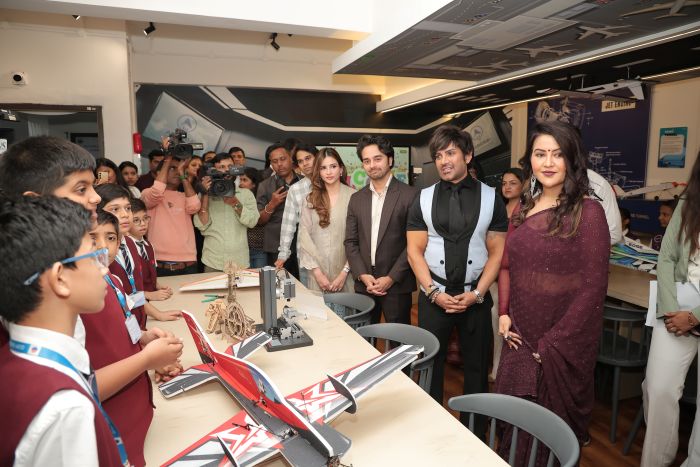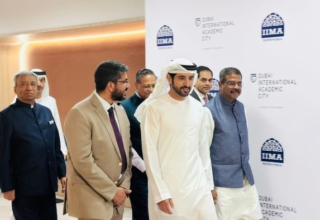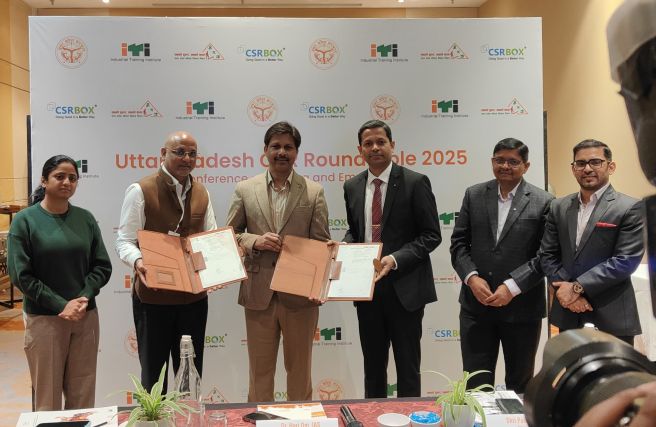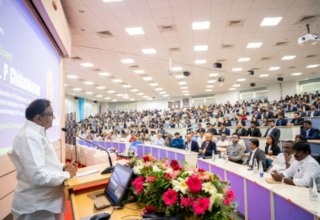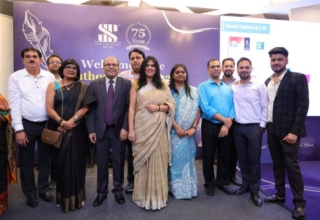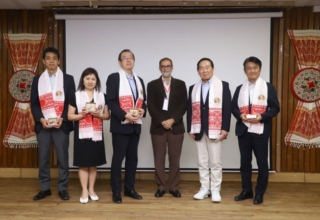
The Serendipity Arts Festival 2024 held in Goa was the venue for “Touched,” a groundbreaking exhibition designed for the visually impaired
Ten students from the Indian Institute of Art & Design (IIAD) recently put their collection of 45 immersive artworks in an exhibition designed for the visually impaired to experience art through touch. The exhibition titled “Touched,” was organized at the Serendipity Arts Festival in Goa from 15-22 December, 2024.
This project, curated by Serendipity Arts Festival curator Salil Chaturvedi alongside IIAD faculty members Kishore Chakraborty and Pankaj Narain with the assistance of Ravish Pandey, Mahesh Biswas and Anurag Vishwakarma became a highlight of South Asia’s largest arts festival.
Touched exhibition aimed to distinguish itself at the festival by creating an immediate and profound impact. It invited the audience to engage their hands and senses, enabling visitors to experience the artwork intimately and become active participants rather than mere observers. Everywhere, it has attracted crowds of both sighted and visually impaired visitors, allowing them to share the unique experience of discovering art through touch.
At the heart of “Touched!” is the idea to feel art that speaks through your fingertips. The exhibition features intricate tactile artworks that tell stories through texture, allowing visitors to experience art in new ways. From three-dimensional landscapes that ripple beneath your touch to sculptural pieces that reveal their narratives through exploration, each work invites visitors to close their eyes and discover art anew.
“Everything we observe we see through our eyes. But for the visually impaired, art comes alive through touch—which inspired the name “Touched!” As Kishore Chakraborty, Course Leader of Foundation in Design at IIAD, shares: “I’ve been a practising artist for over 3 decades, but watching a visually impaired visitor discover our students’ work through touch—their face lighting up with understanding—that was a moment I’ll never forget.”
Key Artworks
- “Sukoon”: An installation emphasising human resilience and life’s continuous flow through tactile storytelling.
- “Kathinaaiya”: This poetic art explores resilience and the natural rhythms of life.
- “Spectrum of the Soul”: A multi-sensory exploration of human emotions through expressive portraits.
 The exhibition welcomed visitors with immersive artworks such as “Ropes of Emotion.” This piece is a visual exploration of human emotions, represented through intricate rope installations. The ropes twist, turn, and intertwine, symbolising the complexity and fluidity of our feelings. “Working on this project made us realize how much we take sight for granted. When one sense is lost, others become heightened—we wanted to create art that could awaken these other senses and create a new way of experiencing art,” says Sriyani (Fashion Design, IIAD).
The exhibition welcomed visitors with immersive artworks such as “Ropes of Emotion.” This piece is a visual exploration of human emotions, represented through intricate rope installations. The ropes twist, turn, and intertwine, symbolising the complexity and fluidity of our feelings. “Working on this project made us realize how much we take sight for granted. When one sense is lost, others become heightened—we wanted to create art that could awaken these other senses and create a new way of experiencing art,” says Sriyani (Fashion Design, IIAD).
The artwork titled “Sukoon” highlighted the strength of the human spirit and the ongoing flow of life, even in the face of adversity. It is often through challenges that one discovers the motivation to move forward. This piece illustrates how, despite difficulties, we continue to evolve and grow. “This project completely transformed my understanding of inclusive design. Developing sensitivity towards the visually impaired community wasn’t just about making art accessible—it was about reimagining how we all experience and connect with art,” reflects Akash Kumar Prajapati (Fashion Design, IIAD).
The most powerful moment for me was when a visually impaired visitor told me she could ‘see’ the story I was trying to tell through my piece,” says Neale Nadar, a Communication Design student and participating artist. “That’s when I realized we weren’t just making art accessible—we were creating a whole new language of artistic expression.” The art piece ‘Spectrum of the Soul’ captured the spectrum of human emotions, showcasing relaxation, sorrow, anger, shock, and enjoyment through expressive portraits, abstract forms, or layered sculptures.
What these students have achieved goes beyond art—they’ve shown us that design has the power to break down barriers and unite people through shared experiences,” notes Pankaj Narain, Associate Professor of Foundation in Design. “This is just the beginning of a larger movement towards truly inclusive art.”


